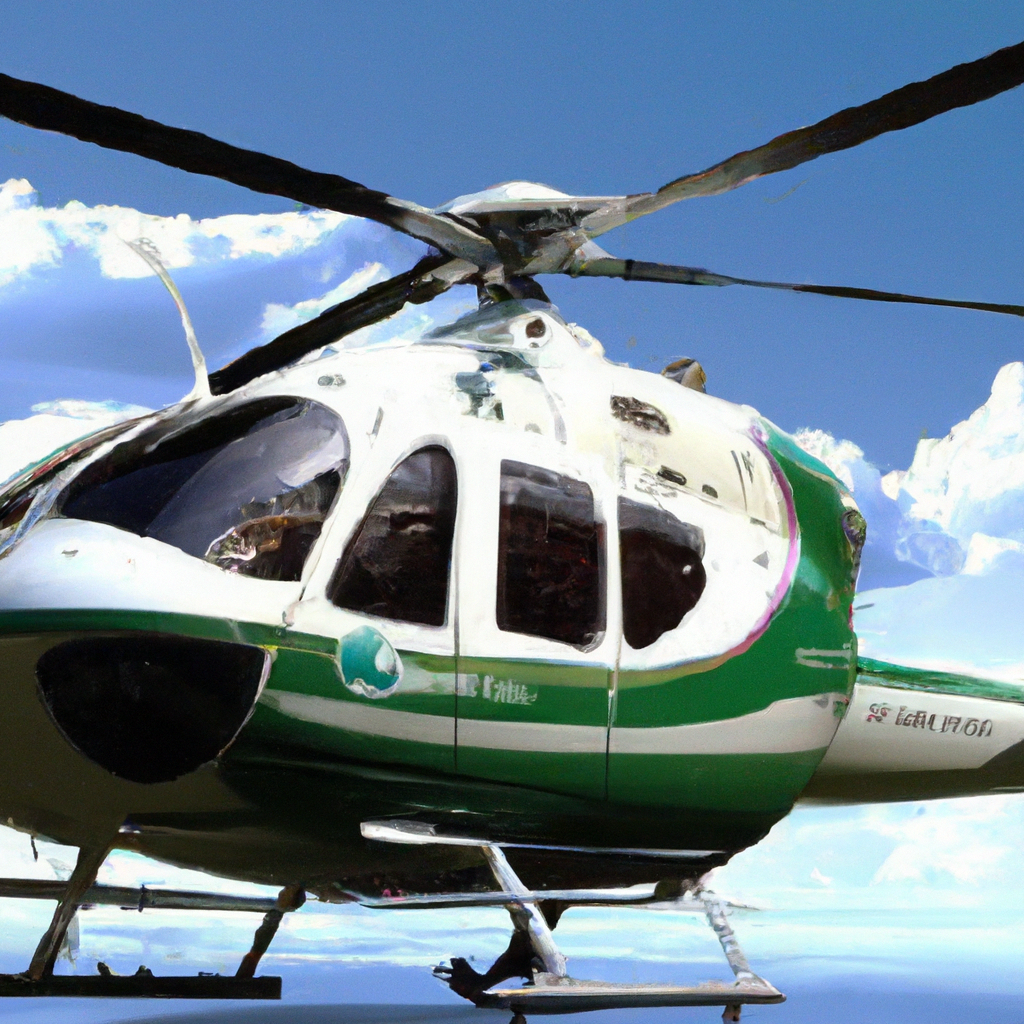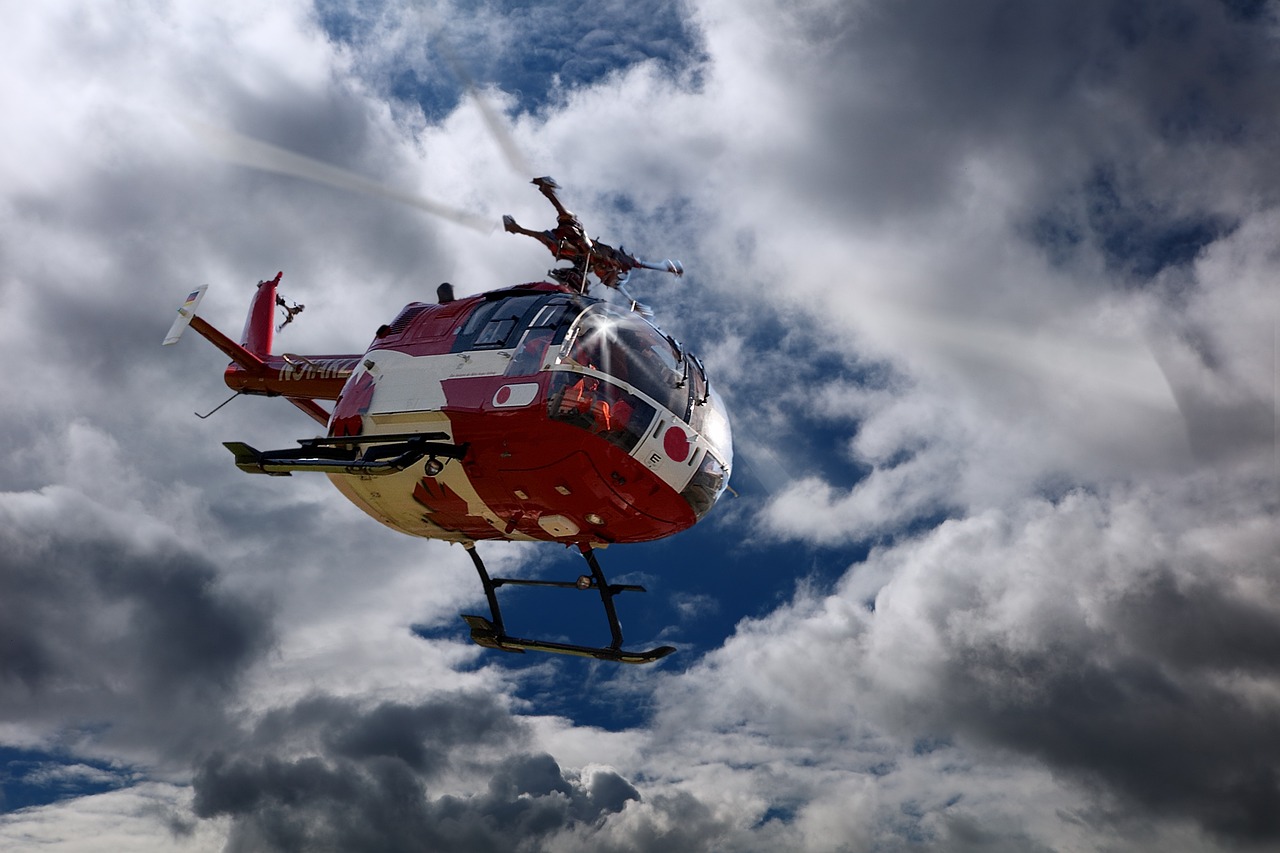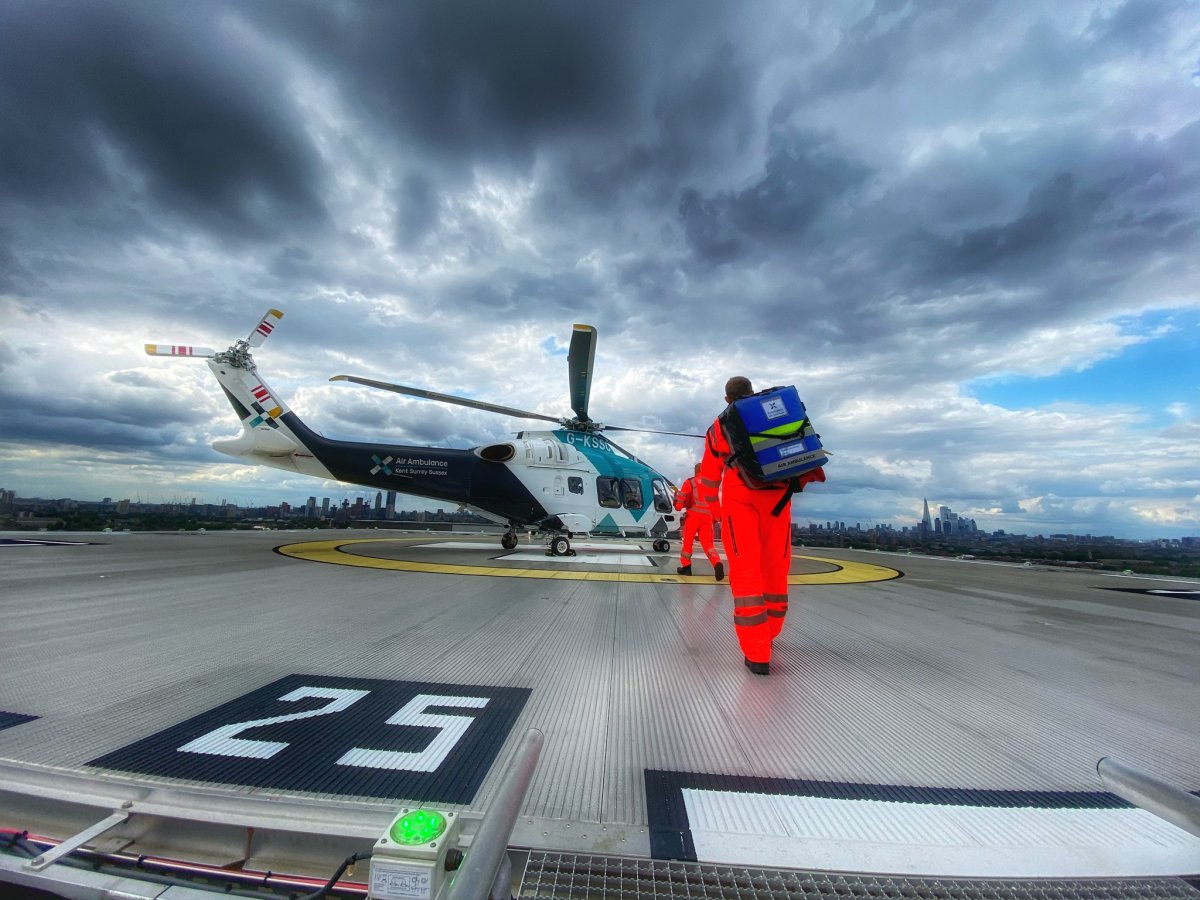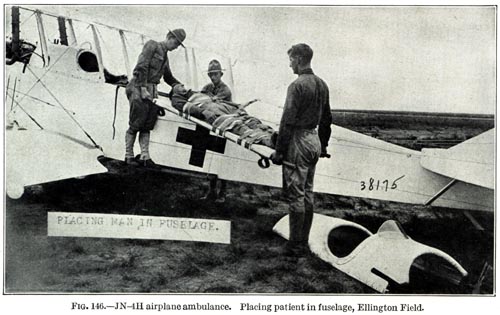Imagine you or a loved one suddenly falls ill or gets seriously injured, and you’re in a remote location far from any major medical facility. You need immediate medical attention, but there’s no time to waste. In situations like these, air ambulances can be a literal lifesaver. These specialized aircraft, equipped with medical personnel and state-of-the-art equipment, are designed to transport patients quickly and safely to the nearest appropriate medical facility. They play a critical role in emergency care, bridging the gap between patients in need and the necessary medical resources. In this article, we’ll explore the vital importance of air ambulances in emergency situations and how they contribute to saving lives.
Understanding Air Ambulances
When it comes to emergency care, time is of the essence. In critical situations where every second counts, air ambulances play a crucial role in providing swift and efficient medical transportation. But what exactly are air ambulances and how do they work? Let’s dive into the world of air ambulances and explore their different types, medical equipment, and the dedicated crew that operates them.
What are Air Ambulances?
Air ambulances, often referred to as medical helicopters or aeromedical services, are specialized aircraft designed to transport patients in need of urgent medical care. These aircraft are equipped with state-of-the-art medical equipment and staffed by highly trained professionals to ensure the safe and efficient transportation of patients to hospitals or specialized medical facilities.
Types of Air Ambulances
There are several types of air ambulances, each designed to cater to specific medical needs and transportation requirements. Helicopters are the most commonly used air ambulances due to their versatility and ability to land in various locations, including remote areas or busy urban environments. Fixed-wing aircraft, on the other hand, are used for long-distance transports and can cover greater distances at higher speeds.
Medical Equipment on Air Ambulances
Air ambulances are equipped with advanced medical equipment to provide immediate care to patients during transport. These may include ventilators, defibrillators, cardiac monitors, intravenous (IV) lines, and medication to stabilize patients. The medical equipment on board air ambulances is carefully selected to meet the needs of different medical emergencies and ensure that patients receive the necessary care en route to the hospital.
Air Ambulance Crew
Behind every air ambulance mission is a dedicated crew working tirelessly to provide the highest level of care and ensure the safe transportation of patients. Let’s take a closer look at the different roles within the air ambulance crew.
Pilots
Pilots are an integral part of the air ambulance crew, responsible for safely operating the aircraft and navigating it to its destination. These skilled professionals undergo rigorous training and must possess excellent flying skills and knowledge of aviation regulations. They work closely with the medical personnel and support staff to ensure a smooth and efficient mission.
Medical Personnel
Air ambulances are staffed by highly trained medical personnel, including doctors, nurses, and paramedics. These professionals are experienced in handling critical care situations and providing immediate medical interventions during transport. They are trained to adapt to the unique challenges of administering care in a moving aircraft and work closely with the pilots to ensure the safety and well-being of the patients.
Support Staff
In addition to the pilots and medical personnel, air ambulances also have support staff that play a crucial role in the overall operation. This includes dispatchers who coordinate the missions, maintenance crews who ensure the aircraft’s safety and readiness, and administrative personnel who handle the logistics and paperwork. Every member of the air ambulance crew works together seamlessly to provide the best possible care to patients in need.
Emergency Care Accessibility
One of the main advantages of air ambulances is their ability to overcome geographical challenges and provide quick access to medical care in remote or hard-to-reach areas. Let’s explore how air ambulances improve emergency care accessibility.
Overcoming Geographical Challenges
In rural or mountainous regions where ground transportation may be limited or slow, air ambulances can swiftly reach patients and transport them to the nearest hospital. These aircraft can land in small or improvised landing zones, allowing medical teams to provide immediate care and ensure timely transportation to medical facilities. This greatly improves the chances of survival and reduces the risk of complications for patients in remote areas.
Reducing Response Time
Time is critical in emergency situations, and air ambulances excel in reducing response time. Unlike ground ambulances that can be hindered by traffic congestion or distance, air ambulances can quickly navigate through the airspace and reach their destinations in a fraction of the time. This rapid response can be lifesaving for patients in critical condition, providing them with the medical attention they need as soon as possible.
Improved Transport to Specialized Facilities
In some cases, patients require specialized medical care that may not be available in their local hospitals. Air ambulances can transport these patients to specialized facilities or trauma centers that have the necessary expertise and resources to handle their specific condition. This ensures that patients receive the best possible care and increases their chances of recovery.

Speed and Efficiency in Emergency Situations
When it comes to emergency medical situations, speed and efficiency are paramount. Air ambulances offer several advantages that contribute to the swift and efficient transport of patients in critical conditions.
Advantages of Air Transportation
Air transportation allows for rapid response and immediate access to patients in emergency situations, regardless of the terrain or traffic conditions. Unlike ground ambulances, which may be limited by road infrastructure or congested roads, air ambulances can quickly bypass these obstacles and reach patients in need. This speed and agility can make a significant difference in saving lives and providing timely medical interventions.
Avoiding Traffic Congestion
One of the major challenges faced by ground ambulances is traffic congestion, especially in densely populated urban areas. Time spent stuck in traffic can delay the arrival of medical teams and compromise the chances of survival for patients in critical condition. Air ambulances, however, can bypass traffic and congested areas, significantly reducing transportation time and ensuring that patients receive the necessary care as quickly as possible.
Rapid Medical Interventions
Air ambulances are equipped with advanced medical equipment and staffed by highly trained professionals who are experienced in providing immediate care in high-pressure situations. This allows for rapid medical interventions, such as administering medications, performing intubations, or stabilizing patients with life-threatening conditions during transport. The speed and efficiency of air ambulances help ensure that patients receive the critical care they need without delay.
Safe and Secure Patient Transfer
Ensuring the safety and well-being of patients during air transportation is of utmost importance. Air ambulances are designed to provide a safe and secure environment for patients, with specialized features and equipment to monitor their condition and maintain their comfort.
Medical Monitoring and Life Support
Air ambulances are equipped with sophisticated medical monitoring systems to continuously assess the vital signs and condition of patients during transport. These systems provide real-time data to the medical personnel on board, enabling them to make informed decisions and provide appropriate medical interventions. Additionally, air ambulances are equipped with life support equipment, such as ventilators and defibrillators, to stabilize and support patients while in transit.
Ensuring Patient Comfort
In addition to medical monitoring and life support, air ambulances prioritize patient comfort during transport. The aircraft are specifically designed to accommodate patients, with features such as comfortable stretchers, adjustable lighting, and temperature control. The medical personnel on board are trained to provide compassionate care and ensure that patients feel as comfortable as possible throughout the journey.
Swift Transfer and Communication with Hospitals
Once an air ambulance reaches its destination, swift transfer and seamless communication with the receiving hospital are essential. Air ambulance crews work closely with ground medical teams to ensure a smooth transition, providing accurate patient information and ensuring continuity of care. This efficient handover process ensures that patients can quickly receive further medical interventions upon arrival at the hospital, further increasing their chances of recovery.
Specialized Care and Expertise
Air ambulances are not limited to providing general emergency medical transport. They also specialize in critical care transport, neonatal and pediatric expertise, and have access to specialized medical teams when needed.
Critical Care Transport
In some cases, patients may require intensive care during transportation, especially if their condition is critical or unstable. Air ambulances are equipped to handle these situations, with specialized equipment and trained medical personnel who are experienced in critical care. This ensures that patients receive the highest level of medical attention and monitoring throughout the journey.
Neonatal and Pediatric Expertise
Transporting newborns and young children can present unique challenges, requiring specialized equipment and expertise. Air ambulances dedicated to neonatal and pediatric transport are specifically equipped to cater to the unique needs of these young patients. They have incubators, neonatal ventilators, and other equipment necessary to provide specialized care to infants and children during transit.
Specialized Medical Teams
In certain situations, specialized medical teams may be dispatched alongside air ambulances to provide specific expertise or interventions. These teams may include trauma surgeons, critical care physicians, or specialized nurses who can administer advanced medical procedures and interventions during transport. This collaborative approach ensures that patients receive the best possible care tailored to their specific medical needs.
Remote and Disaster Response
Air ambulances play a crucial role in assisting remote communities and providing emergency response during natural disasters or search and rescue operations.
Assisting Remote Communities
In remote or isolated communities where access to medical care is limited, air ambulances serve as a lifeline. They can rapidly transport patients from these remote areas to hospitals or specialized facilities where they can receive the necessary medical attention. This level of accessibility helps bridge the gap in healthcare services for these communities, improving overall health outcomes and reducing the risk of adverse events due to delayed care.
Emergency Response in Natural Disasters
During natural disasters, such as earthquakes, hurricanes, or floods, the infrastructure for ground transportation may be severely compromised or inaccessible. Air ambulances can quickly mobilize and provide emergency medical response in these situations, transporting injured individuals to safety and delivering medical supplies and personnel to areas in need. Their ability to reach disaster-stricken areas swiftly makes air ambulances an invaluable asset in disaster response efforts.
Search and Rescue Operations
Air ambulances also play a critical role in search and rescue operations, assisting in locating and rescuing individuals who are in distress in remote or hard-to-reach locations. Equipped with advanced navigation systems and experienced crews, these aircraft can conduct aerial searches, provide medical assistance on-site, and transport rescued individuals to hospitals or medical facilities.
Coordinated Efforts with Ground Services
While air ambulances excel in swift and efficient transportation, they also rely on coordinated efforts with ground ambulance services for seamless patient care and transfer.
Coordination with Ground Ambulance Services
Air ambulances work closely with ground ambulance services to ensure a smooth transition of patients from the scene of the incident to the aircraft and from the aircraft to the receiving hospital. Ground ambulance services play a vital role in providing pre-hospital care, stabilizing patients, and safely transferring them to the air ambulance. This collaborative approach ensures that patients receive continuous care throughout the entire transport process.
Interfacility Transfers
Air ambulances are also utilized for interfacility transfers, where patients may need to be transported from one hospital to another, often for specialized treatments or procedures. In these instances, air ambulances provide a rapid means of transport, significantly reducing travel time and enabling patients to receive timely interventions or access to specialized medical services at the receiving facility.
Medical Escort Services
For patients who are unable to travel by regular means but do not require the full capabilities of an air ambulance, medical escort services are available. These services involve the transportation of patients who may be stable but require medical supervision or assistance during travel. Medical escorts, usually doctors or nurses, accompany the patient and ensure their well-being throughout the journey.
Challenges and Limitations
While air ambulances offer numerous benefits, there are also challenges and limitations associated with their use.
Weather and Operational Limitations
The safety of air ambulances is heavily dependent on weather conditions. Severe weather, such as thunderstorms or heavy fog, can hinder or prevent flights, leading to delays or cancellations. In these situations, ground transportation alternatives must be utilized, potentially increasing response time or compromising patient care. Additionally, some landing zones may be inaccessible due to adverse weather conditions or limited infrastructure, further complicating the ability to reach patients in remote areas.
High Costs and Insurance Coverage
Air ambulance services come at a significant cost due to the specialized equipment, highly skilled personnel, and operational expenses involved. These costs can be a barrier for some individuals, especially if their insurance coverage does not include air ambulance services or imposes limitations on coverage. The high costs of air ambulance services can potentially create disparities in access to timely and lifesaving emergency medical care.
Access to Air Ambulance Services
While air ambulances are widely available in many regions, there may be limitations in accessing these services in certain areas. Remote or underdeveloped regions may have limited resources to establish and maintain air ambulance operations. This lack of access can result in delayed emergency medical response or the need for patients to be transported over long distances to reach the nearest air ambulance service.
The Future of Air Ambulances
As technology continues to advance, the future of air ambulances holds promising developments that can further improve emergency care.
Technological Advancements
Advancements in aviation technology, such as improved aircraft capabilities, navigation systems, and communication tools, will enhance the safety and efficiency of air ambulances. These advancements can lead to faster response times, better aircraft maneuverability, and enhanced communication between air ambulances, ground services, and medical facilities.
Improved Communication Systems
Effective communication between air ambulances, dispatch centers, and medical facilities is crucial for seamless coordination and transfer of patients. The development of advanced communication systems, including secure and real-time data transmission, can facilitate efficient information exchange, allowing medical teams to better prepare for incoming patients and provide the necessary interventions upon arrival.
Integration with Telemedicine
Telemedicine, the use of technology to provide remote medical care, is becoming an increasingly important component of healthcare delivery. Integrating telemedicine capabilities into air ambulances can allow medical personnel to consult with specialists in real-time during transport, enabling more informed decision-making and specialized interventions. This integration can further enhance the level of care provided and improve patient outcomes.
Air ambulances play a critical role in emergency care, providing swift and efficient medical transportation to those in need. From overcoming geographical challenges to ensuring patient comfort and offering specialized care, air ambulances are a vital component of the healthcare system. While there are challenges and limitations to consider, the future of air ambulances holds promise for further advancements that can enhance emergency medical response and ultimately save more lives.



